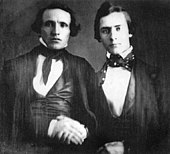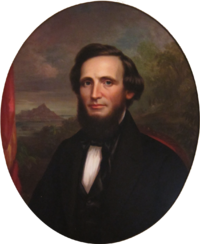the Frauds Through the Judges in the Hawaiian Islands
Exposing Frauds Through the Judges in the Hawaiian Islands
Review by Amelia Gora (2015)
In reviewing the Chief Justices posted at WIKI-PEDIA, the following names were not posted. These were the true Judges selected by Chief Justice Kamehameha III - Kauikeaouli in 1844.
1844 - Saturday, July 20 in THE POLYNESIAN whos the following Judges:
"Associate Judges of the Supreme Court. A. PAKI; C. KANAINA; J.KAPENA; and KAAUWAI."
The Judges of Inferior Courts:
Halai; Honokaupu, Kuhia; Waolani; Halali; J. Kahananui; Gideona Laanui; Kahauolono; Kahele; Kaapuiki; Kuakamauna; Kamakini; Daniela Oleola; Solomona Koolua, Manano, Naakakai, and James Young.
The Following Information Came off of the Weak-a-Pedia/Wiki-Pedia website. Notice that the kanaka maoli Judges were Not entered and notice that the following were haole/Americans who became Judges AFTER the original group of Judges listed:
"Chief Justices of the Kingdom of Hawaii"
The following 8 names are in this category . This list may not reflect recent changes (learn more).
A
- Elisha Hunt Allen became a "citizen of the Kingdom of Hawaiian" 1853.
H
- Charles Coffin Harris became naturalized citizen in 1850.
J
- Albert Francis Judd became a Judge in 1881.
K
- Kekāuluohi was kuhina nui in 1840.
- Kamehameha III became King in 1824.
- Kamehameha V became King in 1863
L
- William Little Lee appointed Judge in 1846.
Y
- Keoni Ana became Judge in 1857.
Hidden categories:
 Lee on left, with Charles Reed Bishop in 1846
Lee on left, with Charles Reed Bishop in 1846
*******************************
**********************************
About William Little Lee
William Little Lee
From Wikipedia, the free encyclopedia
| William Little Lee | |
|---|---|

Portrait of William Little Lee, Aliʻiōlani Hale
| |
| Born | February 25, 1821 Sandy Hill, New York |
| Died | May 28, 1857 (aged 36) Honolulu, Hawaii |
| Nationality | United States Kingdom of Hawaii |
| Occupation | Judge |
| Spouse(s) | Catherine Elizabeth Newton |
| Parent(s) | Stephen Lee Mary Little |
William Little Lee (1821–1857) was an American lawyer who became the first Chief Justice of the Supreme Court for the Kingdom of Hawaii.
Life[edit]
William Little Lee was born February 25, 1821 in Sandy Hill, New York. His father was Colonel Stephen Lee (1773–1856) and mother was Mary Little (1795–1881).[1] He graduated from Norwich University in 1842. He taught in a military school established by Alden Partridge in Portsmouth, Virginia, for one year, and then graduated from Harvard Law School.[2] One of his teachers at Harvard was Joseph Story, who was sitting on the Supreme Court of the United States at the time. He practiced law in Troy, New York, but convinced his boyhood friend Charles Reed Bishop to travel with him to the Oregon Territory in February 1846 on the ship Henry.
The ship was damaged while passing around Cape Horn, and needed to stop at the Hawaiian Islands for provisions and repairs on October 12. Lee was only the second person in Hawaii with any western-style law training. John Ricordhad arrived just two years earlier, and was acting as Attorney General.[3]Ricord convinced Lee to stay, and Bishop was given the job of sorting out the defunct Ladd & Co. which was also the center of a long-lasting legal dispute. A related land dispute by Richard Charlton had caused a British military occupation a few years earlier called the Paulet Affair which was still being sorted out.[4]
On December 1, 1846 he was appointed judge of the island of Oʻahu, and served on the Privy Council of King Kamehameha III for the rest of his life. Ricord left in 1847 and Lee had to finish drafting legislation to formalize the court system. Called the "third organic act" or "act to Organize the Judiciary Department" it was passed September 7, 1847 activated January 10, 1848.[5] Starting in 1847 he became a member of a commission to quiet land titles that led to legislation known as the Great Mahele which formalized fee simple ownership of real estate. On January 16, 1848 he was named Chief Justice of the Superior Court. On March 11, 1849 he married Catherine Newton (c. 1819–1894), and became a boarder in Washington Place with John Owen Dominis and Dominis' mother. Lee had proposed by letter, and they were married aboard the Leland by Rev. Samuel C. Damon.[6]

On August 12, 1849, French admiral Louis Tromelin staged a French Invasion of Honolulu. On August 28 Lee and chief government minister Gerrit P. Judd went aboard the French ship for an attempted peace conference. However, Tromelin continued to sack the city before sailing off with the king's yacht and other plunder. Judd and two young princes were sent to Europe to negotiate treaties, stopping in the United States on the way. Judd advocated annexation by the United States to protect against further actions by British and French.[7] Lee was more in favor of a simple treaty of Reciprocity. Former Scottish physician, now Foreign Minister Robert Crichton Wyllie agreed, and former Hawaiian newspaper publisher James Jackson Jarves negotiated a treaty with John M. Claytonsigned on December 20, 1849.[8]
In 1851 Lee was elected to the House of Representatives in the legislature of the Hawaiian Kingdom.[9] Lee helped draft the 1852 Constitution of the Kingdom of Hawaii and a judiciary bill to implement its provisions.Lorrin Andrews and John Papa ʻĪʻī became associate justices and Lee chief justice of what was now called the Supreme Court.[10]
On December 15, 1854 Kamehameha III died; his nephew took the throne as Kamehameha IV. On January 15, 1855 Lee was named Chancellor, and in March 1855 to 1856 served as an envoy to the United States where he traveled for medical advice.[9] Lee and his wife first went to San Francisco where he met with California's first Senator William M. Gwin. On July 10, 1855 they arrived in Washington, D.C. and he met wirh William L. Marcy and then President Franklin Pierce. Marcy and Lee agreed on terms on July 20, 1855. He also met with representatives of other governments, but could not get them to sign on to a multi-party treaty. In September he returned to Hawaii.[11]:40–41
However, the treaty never went into effect, because it was never ratified by the Senate.[11]:45 His health declined, and he returned to Honolulu. He had probably been suffering from tuberculosis. After his death May 28, 1857 fellow AmericanElisha Hunt Allen became Chief Justice, who would also try to push the treaty through. His widow Catherine Newton traveled back to New York and in 1861 married Edward L. Youmans, the founder of Popular Science. She used income from the sugar plantation to help support the magazine in its early years.[6]
See also[edit]
References[edit]
| Wikimedia Commons has media related to William Little Lee. |
- Jump up^ "Lee Families (5) 1100 - 1913". Rootsweb. Retrieved 2010-03-13.
- Jump up^ William Arba Ellis (1898). "The Hon. William Little Lee, A.M.". Norwich university: Her history, her graduates, her roll of honor. The Rumford press. pp. 244–245.
- Jump up^ Jane L. Silverman (1982). "Imposition of a Western Judicial System in the Hawaiian Monarchy". Hawaiian Journal of History (Hawaiian Historical Society, Honolulu) 16: 48–64. hdl:10524/197.
- Jump up^ John Ricord, Stephen H. Williams, James F. B. Marshall (1846). Report of the proceedings and evidence in the arbitration between the King and Government of the Hawaiian Islands and Messrs. Ladd & Co., before Messrs. Stephen H. Williams & James F. B. Marshall, arbitrators under compact. C.E. Hitchcock, printer, Hawaiian Government press.
- Jump up^ Ralph Simpson Kuykendall (1965) [1938]. Hawaiian Kingdom 1778-1854, foundation and transformation 1. University of Hawaii Press. ISBN 0-87022-431-X.
- ^ Jump up to:a b Barbara E. Dunn (2004). "William Little Lee and Catherine Lee, Letters from Hawai'i, 1848-1855". Hawaiian Journal of History(Hawaiian Historical Society) 38: 61. hdl:10524/147.
- Jump up^ William De Witt Alexander (1891). A brief history of the Hawaiian people. Board of Education of the Hawaiian Kingdom.ISBN 978-0-89875-324-0
- Jump up^ "Treaty with the Hawaiian Islands". December 20, 1849. Retrieved 2010-03-13.
- ^ Jump up to:a b "Lee, William L. office record". state archives digital collections. state of Hawaii. Retrieved 2010-03-11.
- Jump up^ Frear, Walter F. (1894). "Evolution of the Hawaiian Judiciary". Papers of the Hawaiian Historical Society (Honolulu: Hawaiian Historical Society) (7). hdl:10524/966.
- ^ Jump up to:a b Ralph Simpson Kuykendall (1953). Hawaiian Kingdom 1854-1874, twenty critical years 2. University of Hawaii Press.ISBN 978-0-87022-432-4.
| Government offices | ||
|---|---|---|
| Preceded by First | Kingdom of Hawaii Chief Justice 1848–1857 | Succeeded by Elisha Hunt Allen |
SUMMARY
William Lee worked for the American Consulate when he arrived in Hawaii with his lover Charles Reed Bishop. William Lee gave his resignation to Kamehameha III - Kauikeaouli in 1854 before he left the Hawaiian Islands. Kamehameha III - Kauikeaouli died shortly after.
Those who work with Consulates are actually spies of a foreign government.
Members of the Justices were part of the Masons.
The Masons were set to break up Monarchy Governments.
Example: Albert Francis Judd was a Mason.
Judd stole the records off of Queen Liliuokalani's desk after the wrongful dethonement.
To All Kanaka Maoli and Friends,
It appears that the instruments posted at http://maoliworld.ning.com/forum/topics/legal-rights-of-kanaka-maol... are part of the most important discoveries ever posted because it covers a number of issues that the Judges wrongfully interpreted, assumed AFTER Kamehameha III - Kauikeaouli died in 1854.
The issues appear in the Probate of Kamehameha IV - Alexander Liholiho in 1865.
The following came out of the pages of Melody MacKenzie's book when she had worked for the Native Hawaiian Legal Corporation:
Note the date: MARCH 8, 1848 vs. the Real Information signed by Kamehameha and Keoni Ana on JUNE 7, 1848.
Note: Once again notice the date and notice how it is called a "Declaration" and the "interpretation" of the Judges AFTER Kamehameha IV - Alexander Liholiho died.
Notice that the typewritten material are the 'translations of the Hawaii Supreme Court of 1864'.
It appears that there were deliberate changes made by the "interpretations" or misinterpretations or deliberately enhanced changes of the intentions of Kamehameha III - Kauikeaouli by the criminal judges of the period who were the assistants under William Lee such as former American Civil War General Harris.
Reminder: There's No Statutes of Limitations when it comes to FRAUD.
Continous printing of erroneous information by Weak-a-Pedia/Wiki-Pedia proves that the intent is to distort, criminally perpetuate lies, fallacies, deliberately misinform, mislead our people and friends.
Always question the writings of the foreigners who perform indoctrination of our own.
Research incomplete.
Informing many because..............
Something STINKS...............(.and I know it's NOT ME) WICKED TO THE MAX!
aloha.
http://www.youtube.com/watch?v=nzcv5TJkJBA Fifteen Men (Bottle of Rum)
Reference:
None Dare Call It Conspiracy
Whether you're a fan of conspiracy theory or not, the facts presented, and the conclusions drawn, in this book, are thought-provoking and outrageous.
DECLASSIFIED: 50 TOP-Secret Documents That Changed History
A publication of the Central Intelligence Agency For additional copies or information on CIA, write to: Public Affairs Central Intelligence Agency Washington, DC 20505 (703) 482-0623 ISBN No. 1-929667-12-4 or visit our website at www.cia.gov
INTELLIGENCE IN THE CIVIL WAR
MASONS In Hawaii

No comments:
Post a Comment